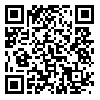BibTeX | RIS | EndNote | Medlars | ProCite | Reference Manager | RefWorks
Send citation to:
URL: http://jstnar.iut.ac.ir/article-1-2898-en.html
Typical routine surveys of soils are relatively expensive in terms of time and cost and due to the fact that maps have been traditionally developed and considering their dependence on experts' opinions, updating maps is time consuming and sometimes not economical as well. While soil digital mapping, using soil various models - the Landscape, leads to simplification of the complexity found in natural soil systems and provides users with quick and inexpensive updates. In fact, the model represents a simplified form of the complex relationships between the soil and the land. This study aims to consider inferential model Soil-Land (SOLIM) in mapping and estimating soil classes in Aran area, Isfahan province. For this purpose, the SOLIM model inputs are digital geological and environmental layers of digital elevation model (DEM) including elevation, slope in percent, slop direction, curvature of the earth's surface, wetness indicator, flow direction, flow accumulation, and satellite images of Landsat 8. The seven subcategory of soil in the study area are input data of SOLIM model. Then fuzzy maps were prepared for seven types of soil and final maps of soil prediction were created by non-fuzzy action. Results showed that the SOLIM using environment variables has very high ability to separate soil types in greater detail and soils with different parent materials, geology, climate and vegetation can be separated from each other by this model with a high degree of accuracy. Comparing error matrix shows that the overall accuracy of the map derived from the model SOLIM is 92.36%.
Received: 2015/02/7 | Accepted: 2017/05/15 | Published: 2017/11/12
| Rights and permissions | |
 | This work is licensed under a Creative Commons Attribution-NonCommercial 4.0 International License. |







